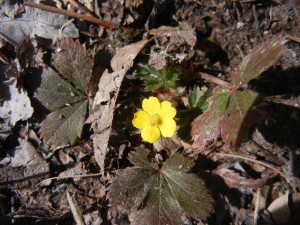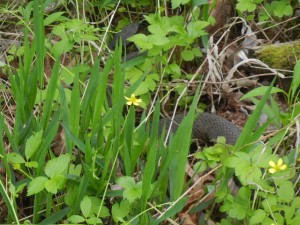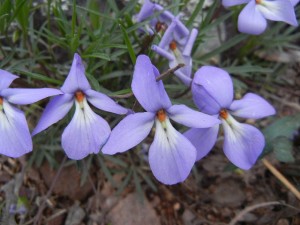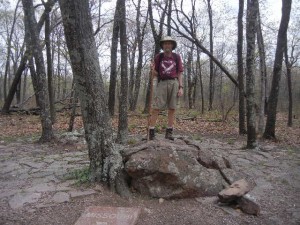5-8 April: On departure day, there were still several inches of the recent snow left, plus a little extra that fell overnight. As we drove off, the rising water level of our lake had begun to flood across our road. Gray clouds thinned a bit as we headed south, snow accumulations disappeared as we drove through Massachusetts, there was a green blush of new grass shoots poking up in Connecticut, and early-flowering landscape trees were blooming in New Jersey. We camped in the driveway of Amy’s sister Ruth overnight, then headed off for new states to add to our camping/hiking/biking portfolio. Our first objective for 2017 happened to be the First State (Delaware).

Still, it didn’t feel like spring. We reached our Delaware campground around lunchtime, and hunkered down inside Vagabond for much of the afternoon during rain and thunderstorms. We were bundled up in our warmest clothing against the chilly damp weather, and finally resorted to turning on the heater in the camper. Finally it cleared off and we took a 6-mile hike around Lums Pond. The trail was very nice, and we saw a snowy egret, a great blue heron, and some Canada geese. Sweet gum must be the dominant tree here, because much of the trail was littered with their round, spiky seed pods.

The next day was chilly and rainy again, so indoor reading and rug hooking entertained us until late afternoon, when the rain stopped and we ventured out for a bike ride. We rode on the C&D Canal Recreational Trail, from near the campground to Chesapeake City, Maryland, and back. A bald eagle soared past us. The Chesapeake and Delaware Canal was dug by hand during 1824-1829, and is still in operation today as one of only two sea-level canals in the U.S. The canal shortened the water route between Philadelphia and Baltimore by some 300 miles. The campground was filled nearly to capacity for the weekend despite the cold and wet weather, making us glad that we had made reservations.

At last, a sunny and warmer day as we drove to a short overnight stop in West Virginia. A bit of recent snow dusted the higher elevations as we drove over the Eastern Continental Divide, but lower down the grass was high enough that cattle were out grazing.









































